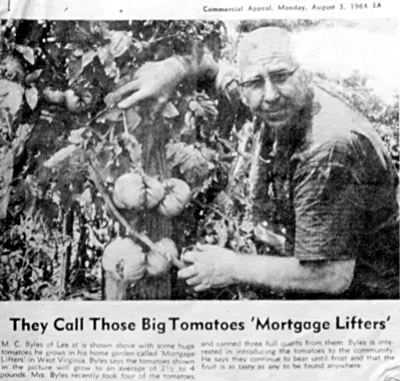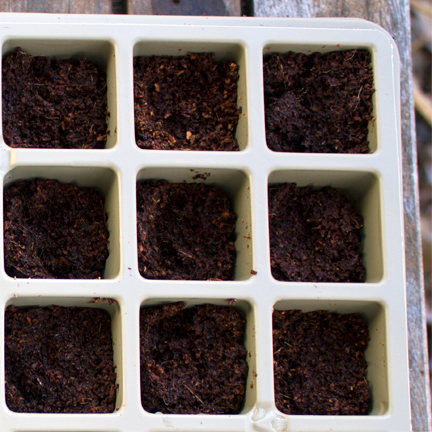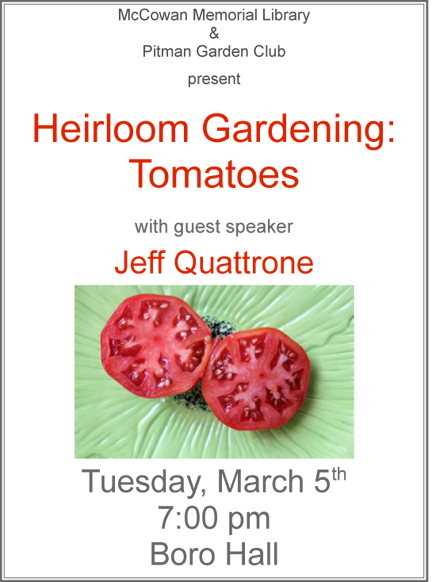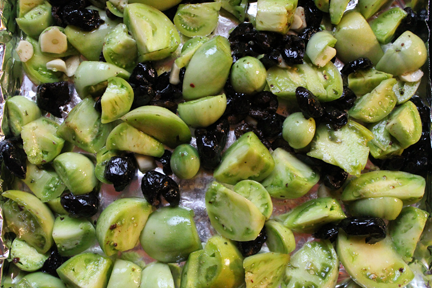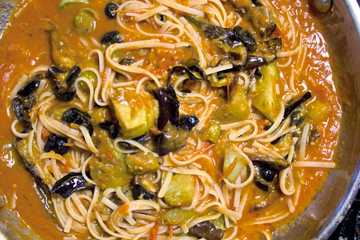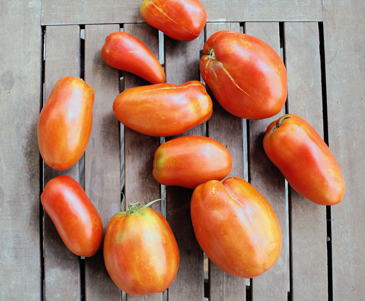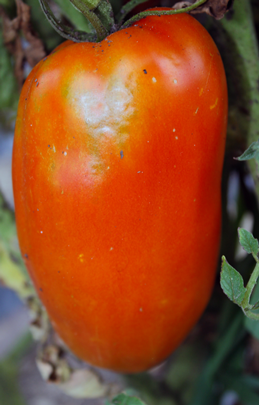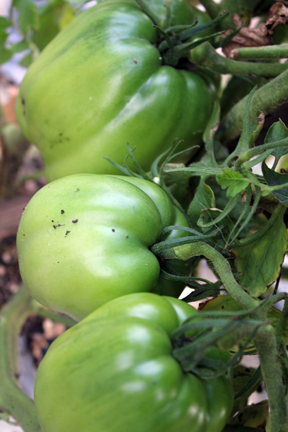Grafted Tomatoes – Facebook Like!
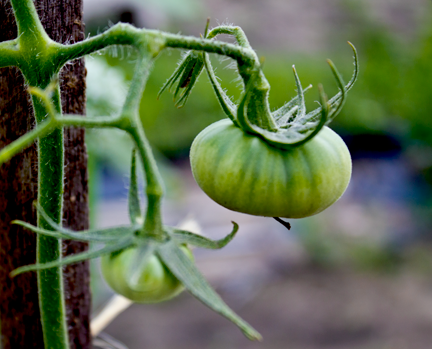 We live in a social media world, and currently, a Facebook like is a seal of approval. So far I like my experience with grafted tomatoes. The grafting technique is over 7,000 years old, yet at the commercial level for tomatoes plants here in the United States it's relatively new. Local farmers, horticulturists, and gardeners probably have been doing this on their own, now it seems smart plant and seed companies have realized that this is a good alternative to genetically modified plants.
It's a basic concept, you take a rootstock of a strong, disease resistant hybrid, and graft an heirloom tomato plant on top of it. The top part being grafted is called a scion. This gives you the benefits of a stronger root system, which is resistant to soil borne diseases, and the beauty, history and taste of an heirloom above the soil. You have to keep the grafting scar well above the soil, a minimum of 1 " is required. Tomato plants are notorious for self-rooting, and if the heirloom tomato scion is too close to the soil line, it will want to root. Also, any of the suckers that come out below the grafting scar, will be the root variety, so you need to cut them off.
We live in a social media world, and currently, a Facebook like is a seal of approval. So far I like my experience with grafted tomatoes. The grafting technique is over 7,000 years old, yet at the commercial level for tomatoes plants here in the United States it's relatively new. Local farmers, horticulturists, and gardeners probably have been doing this on their own, now it seems smart plant and seed companies have realized that this is a good alternative to genetically modified plants.
It's a basic concept, you take a rootstock of a strong, disease resistant hybrid, and graft an heirloom tomato plant on top of it. The top part being grafted is called a scion. This gives you the benefits of a stronger root system, which is resistant to soil borne diseases, and the beauty, history and taste of an heirloom above the soil. You have to keep the grafting scar well above the soil, a minimum of 1 " is required. Tomato plants are notorious for self-rooting, and if the heirloom tomato scion is too close to the soil line, it will want to root. Also, any of the suckers that come out below the grafting scar, will be the root variety, so you need to cut them off.
This year is the first year I have seen them at nurseries and garden centers. While the $14.99 price tag put me off at first, once I started to read about these plants, I became intrigued. Also, an opportunity presented itself to sell some of my harvest, so the claim of up to a 50% higher yield went cha ching in my head.
The plants that I had access to by Burpee, a company that I trust. I bought a Black Krim to start. I love black tomatoes, while the color is not a true black, the darker color tomatoes have the flavor I look for in tomatoes. The strength of the Black Krim plant I bought convinced me to give these plants a try, The plant was trying desperately to grow out of the tight confinement it found itself in. The contortions caught my eye. Its was a tangled, gnarly mess, sending out a tremendous amount of new growth in every direction it could find to get someone's attention. It got mine. Leave the contortions to the circus, and let the tomato plant grow I thought.
I had to plant the root ball on an angle to coax the plant into growing vertically. I have on 3 stakes, and so far, it's responding well. Burpee doesn't say on the plant tags, or on it's web page for these plants what the rootstock is, but here is what it's resistant to:
| Rootstock Resistances | |
| C | Cold (Sub-optimum temperature) |
| TMV | Tobacco Mosaic Virus |
| N | Nematodes |
| V | Verticillium Wilt |
| F2 | Fusarium Wilt (Races 1 & 2) |
| PL | Corky Root Rot |
| FOR | Fusarium Crown and Root Rot |
I'll take that any day in heirloom plant.
When the opportunity presented itself to get some of my harvest to market, I went back to the first garden center where I saw these plants. They had a wider variety to choose from than the garden center I bought my Black Krim. When I got there, the plants 50% off. It was getting late in the season, the greenhouse was getting too hot, and the owner wanted the plants to find good homes instead of these plants becoming compost. I bought 3, and was given 3 more by the owner. SO now I have the lucky 7 as I call them.
I found Mortgage Lifters which have a well-deserved reputation for being prolific. If the yield is up to 50% more, Radiator Charlie's going to be very proud. Or at least I hope he will be.
There were Big Rainbows, a variety I didn't know about, and they sound very exciting. A large tricolor beefsteak. What's not to love? The photo at the top of this post is fruit that set on the vine this week. Last week, when the plant went into the ground,they were flowers. In a week's time, during a transplanting transition, it set some impressive fruit.
And the biggest surprise of all, I found a Big Zac, a New Jersey hybrid developed by Minnie Zaccaria by crossing two heirloom varieties. They are known for growing huge tomatoes that could reach 4lbs.-6 lbs. I said welcome home Zac! You're in your home soil with a strong rootstock, plenty of bat guano, and organic microbrewed-wormcasting fertilizer to feed ya. I'm Italian, we like to feed our friends and family well. Big Zac is my new BFF, so he will be quite comfortable, and well feed.
Next year, I will try this grafting technique. Thanks to Johnny's Select Seeds, they have a video up that explains the process, along with rootstock seeds, scion seeds and grafting clips. The grafting clips link doesn't work on the Johnny's page, but this link does.
Finally, here's an excellent overview, and in-dpeth look at grafted tomatoes from Anne Raver of the New York Times. I look forward to watching this tomatoes, grow and produce, and I'll you know how it goes.

